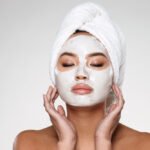Hair coloring is a popular way to refresh your look, experiment with new styles, and cover gray strands. However, frequent hair coloring can have various side effects that impact both your hair and overall health. Understanding these potential effects can help you make informed decisions about your hair care routine and minimize potential damage. Here’s what you need to know about the side effects of coloring your hair frequently.
Hair Damage
Frequent hair coloring can lead to significant damage to your hair. The chemicals in hair dye, such as ammonia and peroxide, strip the hair of its natural oils and weaken its structure. This can result in:
- Dryness: Repeated coloring can leave your hair feeling dry and brittle, as the natural moisture is stripped away.
- Breakage: Weakened hair is more prone to breakage and split ends, making it harder to maintain length and health.
- Loss of Elasticity: Healthy hair has a natural elasticity, but frequent coloring can reduce this, leading to hair that is less flexible and more prone to snapping.
Scalp Irritation
The chemicals in hair dye can cause irritation to the scalp, especially with frequent application. This irritation can manifest as:
- Itching and Redness: The scalp may become itchy and red due to the chemicals coming into contact with the skin.
- Allergic Reactions: Some people may develop allergic reactions to hair dye ingredients, leading to symptoms such as swelling, rash, or hives. Always perform a patch test before using a new product.
Color Build-Up
Over time, frequent coloring can lead to a build-up of dye on the hair, which can affect the overall color and appearance. This can result in:
- Uneven Color: Layering different colors can lead to an uneven or patchy appearance.
- Dullness: Accumulated dye can make hair appear dull and lifeless, as the natural shine is obscured.
Increased Sensitivity
Repeated exposure to hair dye chemicals can increase your scalp’s sensitivity. This heightened sensitivity can make your scalp more reactive to future dye applications, leading to:
- Increased Risk of Irritation: Your scalp may become more prone to irritation and discomfort with each coloring session.
- Heightened Allergic Reactions: Over time, you may develop new or more severe allergic reactions to hair dye ingredients.
Impact on Hair Health
Frequent hair coloring can compromise overall hair health and growth. Potential impacts include:
- Reduced Growth Rate: Damaged hair may grow more slowly, as the hair follicles are affected by the overall health of the hair.
- Loss of Shine: Frequent coloring can lead to a loss of natural shine, making hair appear lackluster.
Potential Health Risks
Some hair dyes contain harsh chemicals that, with frequent use, may pose potential health risks. These include:
- Long-Term Exposure Risks: Prolonged exposure to certain chemicals in hair dye, such as PPD (para-phenylenediamine), may have long-term health implications, including respiratory issues or, in rare cases, more severe conditions.
- Inhalation Risks: The fumes from hair dye products can be inhaled during application, potentially causing respiratory discomfort or issues in sensitive individuals.
Tips to Minimize Damage
To mitigate the side effects of frequent hair coloring, consider the following tips:
- Use Gentle Dyes: Opt for ammonia-free or less harsh hair dye formulations to reduce damage.
- Condition Regularly: Use deep conditioning treatments and leave-in conditioners to keep your hair moisturized and resilient.
- Limit Frequency: Try to space out your coloring sessions to give your hair and scalp a chance to recover.
- Seek Professional Help: If you’re unsure about the best products or techniques, consult a professional hairstylist for advice on maintaining healthy hair.
Image credits: Image by prostooleh on Freepik








No Comment! Be the first one.